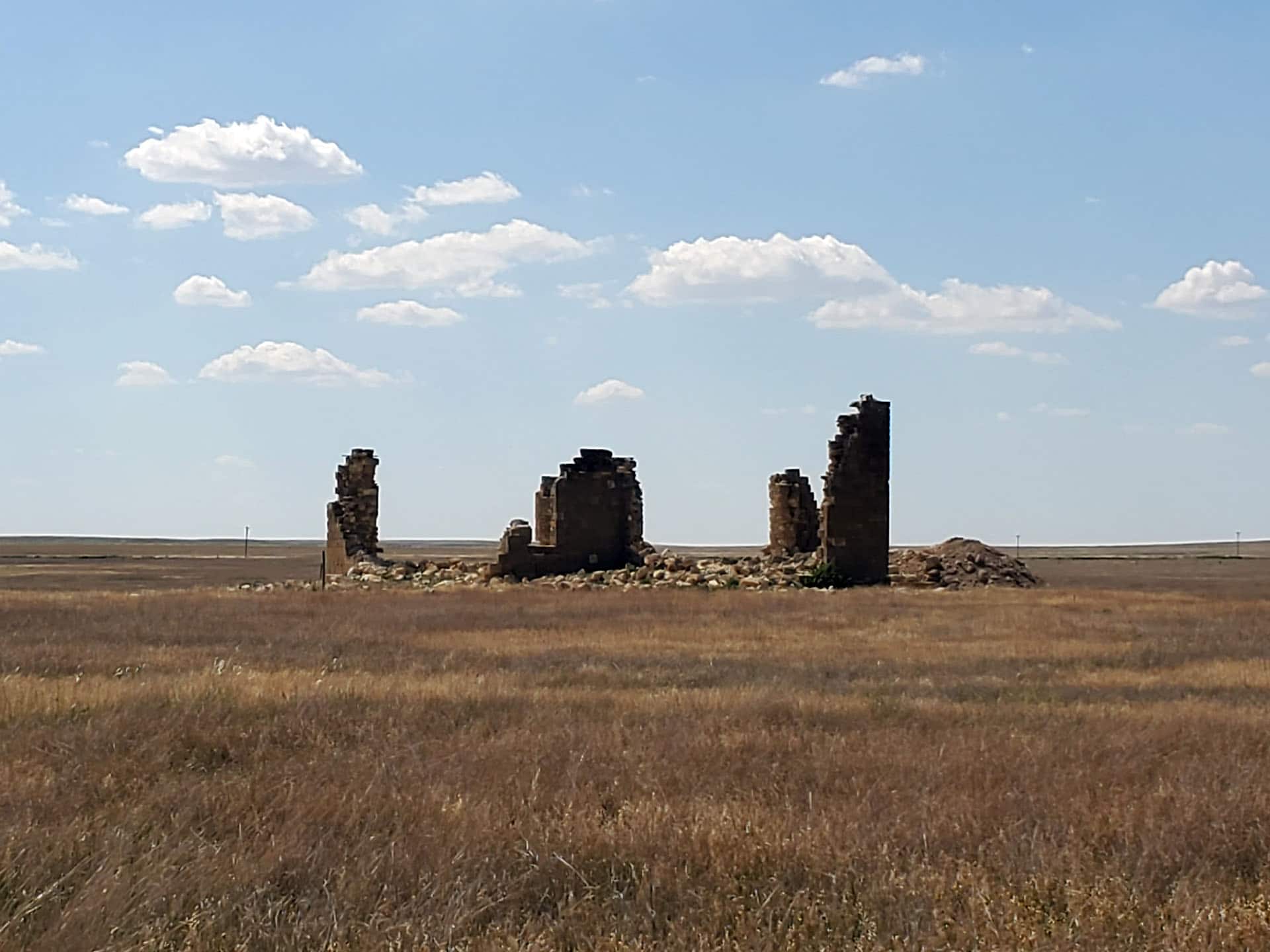Ghost towns hold a special place in the American imagination. A relic of booms and busts, of a life in the West that came and went during times of upheaval and a great migration.
Bodie, California stands alone in the Sierra Nevadas, rusting beneath the sun, devoid of the hopeful gold miners who raised it into existence. In parts of Ukraine, once-great cities stand in suspended animation, victims of invisible radiation which poisoned the land and air for miles after the Chernobyl disaster. The world’s most famous ghost town, Machu Picchu is an Incan city that exists high in the Peruvian Andes. Its location saved it from plunder by the invading Spanish. It is now a UNESCO world heritage site and receives hundreds of visitors every day.
Every ghost town has a story. Today’s article will tell that of Eminence and Ravanna, Finney County’s own pair of twin ghost towns.
The Towns’ Founding
If you visit Ravanna now, you won’t find much. Crumbling pillars of brick in a sea of endless prairie. The walls of the schoolhouse have crumbled so only the corners stand. The courthouse, never used, is a series of low walls and an archway. There are no roads in the town. No signs. No houses. Just two crumbling buildings and a cemetery, alone beneath the Kansas sky.
It wasn’t always like that.
Garfield was a county in Kansas, established in March in 1887. It lasted until 1983. At the time, the United States was in the waning years of the Indian Wars, and many areas that had been Native American territory were being settled by whites in from the east.
Aside from farming, many settlers at the time engaged in buffalo hunting, which was a common job at the time. Indeed, one of Garden City’s most famous residents, Buffalo Jones, made his name as a buffalo hunter.
Both Eminence and Ravanna were growing. New settlers brought other businesses and things for both towns looked to be going well. Then it came time for Garfield county to choose its seat.
As important as a county seat is today, it was even more so in the late 1800’s. In fact, so many towns had disagreements about where they should choose to place their county seat, they sparked a name. County Seat Wars.
Eminence vs Ravanna, a County Seat War
Once a county reached 600 occupants, Kansas Law declared that a county should be formed. The town that was chosen to be the county seat would receive government funds to build new buildings, create jobs, and, in the eyes of the residents, guarantee the prosperity of the town.
As Garfield County approached its 1887 county seat election, it became clear that the fight to become the seat wasn’t going to be pretty. Eminence and Ravanna became bitter enemies. So contentious was the relationship between the two towns that famous lawman Bat Masterson had to be called up from Dodge City to try to keep the peace.
The election was held, the ballots cast, and Ravanna came out ahead by a slim margin of thirty-five votes. Perhaps it might have ended there, if not for a glaring anomaly in the polling numbers.
At the time, both towns had populations of 300-400. In the 1887 Garfield county vote, each city received more than one thousand votes. Immediately, there came accusations from both sides, each blaming the other for ballot stuffing.
While in the interim, Ravanna received the county seat, the contested results made it all the way to the Kansas Supreme Court, where the ruling was reversed and the county seat transferred to Eminence.
Things stayed bitter between the two towns and, in 1892, the Supreme Court dissolved Garfield County because the county lines had been drawn too small. This resulted in the land being annexed by Finney County, and the slow dissolution of both Eminence and Ravanna.
While this might seem intense for a County Seat War, Garfield County fared better than Stevens County, which saw six people die in the battle between Hugoton and Woodsdale.
Part of Finney County
Not all residents packed up and moved away from Eminence and Ravanna. As recently as the 1930’s, there were people attending school in Ravanna. Over the years however, the towns became too expensive to maintain and the residents all left. Now, all that remains of both towns are a few low brick walls and the crumbling remains of the schoolhouse.
And also maybe a lesson about what happens when we forget the golden rule, that we should love our neighbor as ourselves.


